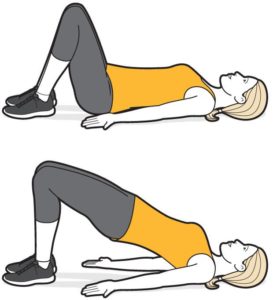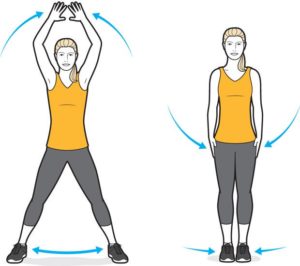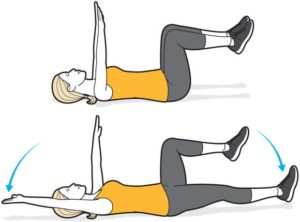 Incontinence is one of the biggest health issues in society today, costing countries over a billion dollars per year in healthcare and continence management, of which women’s health physiotherapy plays a large role. Interestingly, 60-70% of people affected by incontinence could be cured or better managed. Of this population, women compromise over 70% of those affected, with problems arising from after childbirth and menopause. Statistically speaking, 70% of people affected will not even talk about this problem with their GP. At Endurance on 8th Health Centre we make it our mission to demystify pelvic floor issues, speak about them openly, and improve the symptoms with pilates, physiotherapy, and other modalities.
Incontinence is one of the biggest health issues in society today, costing countries over a billion dollars per year in healthcare and continence management, of which women’s health physiotherapy plays a large role. Interestingly, 60-70% of people affected by incontinence could be cured or better managed. Of this population, women compromise over 70% of those affected, with problems arising from after childbirth and menopause. Statistically speaking, 70% of people affected will not even talk about this problem with their GP. At Endurance on 8th Health Centre we make it our mission to demystify pelvic floor issues, speak about them openly, and improve the symptoms with pilates, physiotherapy, and other modalities.
So what do these stats mean in real life?
Many women will experience some form of pelvic floor weakness during their lifetime whether they have had children or not, be it leaking during laughing, coughing, sneezing or exercise or overactivity of the bladder aka “urgency”. For some women, their symptoms may be as simple as feeling like their pelvic floor is weaker or more lax than it used to be. For some the first sign of pelvic floor weakness can be pelvic organ prolapse, which is where the pelvic organs (bladder, bowel or rectum) drag down from their original position and can even “fall outside the body” in severe cases. Pelvic floor weakness has also been linked to lumbo-pelvic instability and “core weakness”. For some women, the lucky 1/3 who don’t experience pelvic floor weakness, it is still important to be aware of the risks and get in touch with the pelvic floor muscles before any issues arise.

Pelvic floor muscle training has been found to be effective in preventing stress urinary incontinence when taught by a trained women’s health physiotherapist, a service provided by our women’s physiotherapist at Endurance on 8th Health Centre. Pelvic floor analysis by a trained women’s health physiotherapist can be done via internal examination or diagnostic ultrasound analysis (which is less invasive), although research indicates that the latter is less effective at analysing strength and that digital examination is the preferred method. At Endurance on 8th Health Centre, our female physiotherapist is dedicated improving the symptoms of women in the community seeking help for their pelvic floor issues.
Pelvic floor training includes assessing how long you can squeeze your pelvic floor muscles and for how many repetitions. Then once a good contraction is achieved, integrating this into functional movements under the guidance of a women’s health physiotherapist, by practising holding the pelvic floor with progressively harder movements for example, static sitting, to standing, to squatting, to jumping and to running. It is entirely possible to rehabilitate the pelvic floor muscles in most cases to allow a woman to be strong enough to jog and cough or sneeze without any leakage.
Other methods of pelvic floor treatment include weight loss, monitored fluid intake, avoidance of bladder irritants and giving up smoking and these have been shown to be effective in treating urinary incontinence and your women’s health physiotherapist can help guide you through these things to help improve pelvic floor control. (Wilson, Berghmans, Hagen, Hay-Smith, Moore, Nygaraard, Sinclair, Yamanishi and Wyman, 2005)
How does weak pelvic floor link in with Clinical Pilates?
Pilates is a method of exercising that focuses on control of the body’s deep core stabilizers, posture and mindfulness, to teach the body optimal movement patterns. Part of achieving this requires all the core muscles to be working in synergy, including the pelvic floor. We found in the clinic that many women were reporting signs of pelvic floor weakness but were clueless about where to go, who to see and what to expect in the future.
Once a client has started with our women’s health physiotherapist and can accurately activate the pelvic floor, a perfect way of exercising that is safe and effective for the pelvic floor is clinical pilates under the guidance of physiotherapists. The reformer, Cadillac, wunda chair and mat exercises are low impact and focus on pelvic floor and breathing control. Clinical Pilates at Endurance on 8th Health Centre can be undertaken by women of all ages and stages, even throughout pregnancy and early post-natally.
Research also shows that women who undertake pelvic floor muscle training under supervision on a weekly basis are more likely to succeed and see improvements than those undertaking the training with little or no supervision. (Hay-Smith et al, 2011).
Men, don’t forget about your pelvic floor either! Signs of weakness in males include incontinence, dribbling, urgency, erectile dysfunction and are common following prostatectomy. Pilates can help men achieve greater awareness of the pelvic floor and help them to strengthen their entire body in the process.
So remember, prevention is better than a cure, if your pelvic floor isn’t functional at its optimum level or if it is and you want to make sure it stays that way, seek help from a women’s health physiotherapist or start some clinical pilates to help gain control of your body.
Below are some exercises to help you strengthen your pelvic floor:
Bridge

Lie on your back with your knees bent and feet flat on the floor,
hip-width apart. Inhale, engage your pelvic floor, and lift your hips.
Hold for up to 10 seconds (keep breathing!).
Lower your hips back down and release your pelvic floor. Do 10 reps.
Wall Squat

Stand against a wall, feet hip-width apart. Inhale, engage your pelvic floor, and lower yourself into a squat as though sitting in a chair.
Hold for 10 seconds.
Rise back up to standing and release your pelvic floor. Rest for 10 seconds.
That’s one rep. Do 10.
Jumping Jacks

Start with your legs together.
Engage your pelvic floor as you jump your legs apart and bring your arms overhead.
Release your pelvic floor as you hop your legs back together.
Repeat for 30 to 60 seconds.
Dead bug crunch

Lie on your back as shown.
Extend your arms straight up toward the ceiling. Inhale, engage your pelvic floor, and extend your right arm beyond your head and right leg forward.
Release pelvic floor and draw arm and leg back to starting position. Repeat with left arm and leg.
Do 10 reps on each side.
Learn more here about our women’s health physiotherapist, Sandi Seto, PT
Contact us or book an appointment with Sandi Seto, PT today


